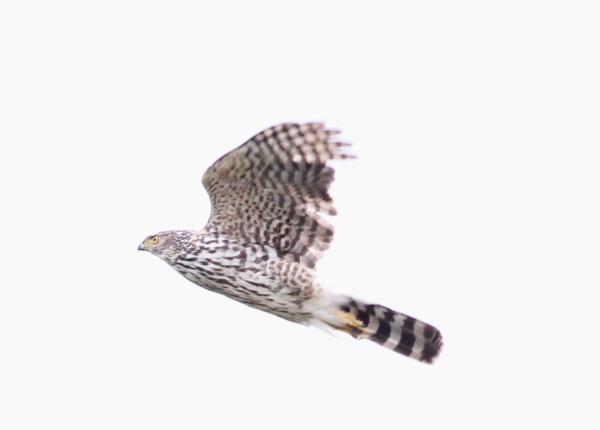Did You Know?
- Some people consider the Chilean Hawk to be a subspecies of the Bicolored Hawk.
- This hawk is one of the least studied raptors in its range.
- The Chilean Hawk is also known as the Peuquito
How The Peregrine Fund is Helping
Though The Peregrine Fund doesn't work directly with Chilean Hawks, our efforts in scientific research, habitat conservation, education, and community development help conserve raptors on a global scale. We also supply literature to researchers from our avian research library, which helps scientists around the world gather and share important information on raptor conservation. Our work with the Neotropical Raptor Network helps conserve raptors by fostering collaboration and communication among raptor enthusiasts in the region. And, finally, our support of the Global Raptor Information Network gives raptor researchers tools to more efficiently conduct their own studies while contributing to a global program. It also provides citizen scientists a way to participate in raptor science and conservation.
Where They live
The Chilean Hawk is found in the South American countries of Chile and Argentina. It is found in a myriad of lowland habitats including open areas, deciduous forest, scrub and agricultural fields with trees or shrubs, shrub-steppe, rainforest, mesophytic forest, montane forest, and parkland.
What They Do
The Chilean Hawk is a diurnal bird of prey, meaning it is active during the day and rests, or roosts, at night. Researchers have described these hawks as being "shy and secretive." They spend a lot of time perching on branches.
Why They Need our Help
Because the Chilean Hawk isn't yet considered to be its own species, but rather a subspecies of Bicolored Hawk, its status has not yet been evaluated by the IUCN. It likely is threatened by habitat loss and degradation due to fires and logging, as well as by human persecution.
What They Eat
Just as the Chilean Hawk can be found in a number of different habitats, so too does it prey on a number of different animals. It feeds on birds, such as woodpeckers, thrushes, pigeons and rails, as well as rodents, such as the Olive Grass Mouse and the Long-tailed Pygmy Rice Rat. It also feeds on lizards, and insects. In order to catch this plethora of prey, the hawk uses two main hunting techniques. It might "sit and wait" on a perch, patiently waiting for unsuspecting prey to pass by, or it may spend time actively searching for animals in vegetation. It has been observed capturing insects in flight.
Nest, Eggs and Young
Very little is known about the breeding biology and behavior of this species. The information we do have is based on only a few nests that have been found and studied. In general, these birds build oval-shaped nests of dry sticks and twigs. The nests studied have been built in the upper canopy of a Nothofagus tree. The female will lay 2-3 eggs.
Chilean Hawk and The World Center for Birds of Prey
The World Center for Birds of Prey offers fun ways to learn about birds of prey. The visitor center offers interactive displays, tours, interesting videos and a children's room with activities from coloring sheets to quizzes to costumes and a touch table - all available for the curious mind. We also have several different birds of prey on display year-around. Knowledgeable staff and volunteers are on hand to answer any questions you may have about Chilean Hawks or any other birds of prey.
References:
Figueroa Rojas, R.A., Orellana, S.A., Bravo Vivanco, C., Corales Stappung, E.S., González, B.A. and Ibarra-Vidal, H., 2004. Prey characteristics of the Chilean Hawk (Accipiter chilensis) in the southern temperate forest. El Hornero, 19(02), pp.077-082.
Figueroa, R.A., Alvarado, S., González Acuña, D. and Corales, E.S., 2007. Nest characteristics of the Chilean Hawk (Accipiter chilensis, Falconiformes: Accipitridae) in an Andean Nothofagus forest of northern Patagonia.
Global Raptor Information Network. 2021. Species account: Chilean Hawk Accipiter chilensis. Downloaded from http://www.globalraptors.org on 31 Dec. 2021









